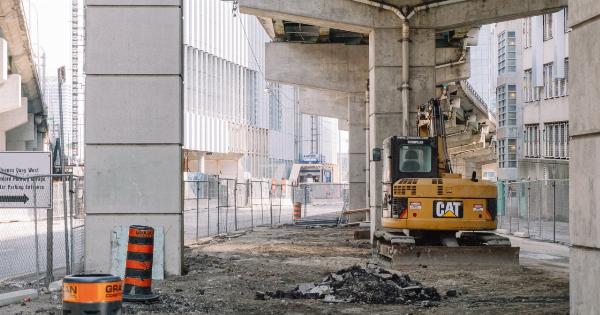Osteoporosis is a condition that weakens the bones, making them more prone to fractures and breaks. It occurs when the body loses too much bone or fails to make enough bone, leading to low bone mass and deterioration of bone tissue.
Osteoporosis is often referred to as a “silent disease” because it can progress undetected for years, without any symptoms, until a fracture occurs. It is more common in older adults, particularly women after menopause, but it can affect people of all ages and genders.
Understanding Bone Health
Before delving into ways to prevent osteoporosis, it is important to understand the basics of bone health. Bones are living tissues that are constantly being broken down and rebuilt in a natural process called remodeling.
During childhood and adolescence, the body produces new bone faster than it breaks down old bone, resulting in overall bone growth and increased bone density. However, as we age, this balance shifts, and bone loss starts to outpace bone formation.
Bone density refers to the amount of mineral content in bones, which determines their strength and resistance to fractures.
Peak bone mass, the maximum bone density and strength achieved during early adulthood, is a crucial factor in preventing osteoporosis later in life. The greater the peak bone mass, the lower the risk of developing osteoporosis.
Risk Factors for Osteoporosis
Several factors contribute to the development of osteoporosis. Some of the major risk factors include:.
Age and Gender
Osteoporosis occurs more frequently in older adults, as bone density naturally decreases with age. Women, especially after menopause, are at a higher risk due to hormonal changes that lead to accelerated bone loss.
Family History
If you have a family history of osteoporosis or fractures, you may be more susceptible to developing the condition.
Lifestyle Choices
Certain lifestyle choices can increase the risk of osteoporosis. These include smoking, excessive alcohol consumption, sedentary behavior, and a diet lacking in calcium and vitamin D.
Medical Conditions
Medical conditions such as rheumatoid arthritis, celiac disease, and hormonal disorders can affect bone health and increase the risk of osteoporosis.
Medications
Long-term use of certain medications, such as corticosteroids and some anticonvulsants, can lead to bone loss and osteoporosis.
Expert Advice for Preventing Osteoporosis
While certain risk factors cannot be changed, there are numerous lifestyle choices and preventive measures that can help protect your bones and reduce the risk of osteoporosis. Here are some expert tips to keep your bones healthy:.
1. Get Sufficient Calcium
Calcium is a vital nutrient for bone health. Ensure you consume enough calcium-rich foods, such as dairy products, leafy green vegetables, and canned fish with bones. The recommended daily intake of calcium for adults is around 1000-1200 milligrams.
2. Vitamin D is Crucial
Vitamin D plays a crucial role in calcium absorption and bone health. Spend time outdoors to soak in sunlight, which stimulates the body’s production of vitamin D.
Additionally, include vitamin D-rich foods in your diet, such as fatty fish (salmon, mackerel), fortified dairy products, and egg yolks.
3. Engage in Weight-Bearing Exercises
Weight-bearing exercises help promote bone density and strengthen muscles. Activities such as walking, jogging, dancing, and weightlifting put stress on the bones, stimulating them to become stronger.
Aim for at least 150 minutes of moderate-intensity aerobic activity or 75 minutes of vigorous-intensity aerobic activity each week.
4. Don’t Forget about Strength Training
Incorporating strength training exercises into your routine can further enhance bone health. Focus on exercises that target major muscle groups, such as squats, lunges, and push-ups.
Gradually increase the weight or resistance to challenge your bones and muscles.
5. Quit Smoking
Smoking has detrimental effects on bone health. It decreases estrogen production, which is essential for maintaining bone density, and impairs blood flow to the bones. Quitting smoking can significantly reduce the risk of osteoporosis.
6. Limit Alcohol Consumption
Excessive alcohol intake can weaken bones and increase the risk of fractures. If you choose to drink alcohol, do so in moderation.
The National Institute on Alcohol Abuse and Alcoholism recommends no more than one drink per day for women and two drinks per day for men.
7. Maintain a Healthy Body Weight
Being either underweight or overweight can negatively affect bone health. Maintain a healthy body weight through a balanced diet and regular exercise. Consult with a healthcare professional to determine your ideal weight range.
8. Assess Your Fall Risk
Falls are a common cause of fractures in individuals with osteoporosis. Take measures to prevent falls by making your home safer, wearing appropriate footwear, and addressing any balance or mobility issues.
If necessary, use assistive devices such as grab bars and handrails.
9. Consider Hormone Therapy
Hormone therapy, such as estrogen replacement therapy or selective estrogen receptor modulators, may be recommended for postmenopausal women to slow bone loss and reduce fracture risk.
Consult with your healthcare provider to determine if hormone therapy is right for you.
10. Get Regular Bone Density Tests
Regular bone density tests, such as dual-energy X-ray absorptiometry (DEXA) scans, can assess your bone health and detect osteoporosis or low bone density before fractures occur.
Your healthcare provider can advise how frequently you should undergo these tests based on your risk factors and age.
Conclusion
Osteoporosis is a serious condition that can significantly impact quality of life.
However, by taking proactive steps to prioritize bone health, such as consuming adequate calcium and vitamin D, engaging in weight-bearing exercises, and avoiding tobacco and excessive alcohol consumption, you can reduce the risk of developing osteoporosis. Regular check-ups and bone density tests will help monitor your bone health and enable early intervention if needed.
By implementing expert advice and adopting a bone-healthy lifestyle, you can protect your bones and minimize the impact of osteoporosis.






























